 W
WThe 2008 unrest in Bolivia began with protests against President Evo Morales and calls for greater autonomy for the country's eastern departments. Demonstrators escalated the protests by seizing natural gas infrastructure and government buildings. Violence between supporters of Morales and opponents resulted in at least 30 deaths.
 W
WThe Army of the North, contemporaneously called Army of Peru, was one of the armies deployed by the United Provinces of the Río de la Plata in the Spanish American wars of independence. Its objective was freeing the Argentine Northwest and the Upper Peru from the royalist troops of the Spanish Empire. It was headed by Hipólito Vieytes (1810), Juan José Castelli (1810–1811), Juan Martín de Pueyrredón (1811–1812), Manuel Belgrano (1812–1814), José de San Martín (1814), José Rondeau (1814–1816), Manuel Belgrano (1816–1819) and Francisco Fernández de la Cruz (1819-1820).
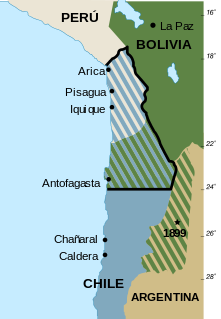 W
WThe Atacama border dispute is a dispute between Chile and Bolivia that stems from the transfer of the Bolivian Coast and the southern tip of Peru to Chile in the 19th century through the Treaty of Ancón with Peru and the Treaty of Peace and Friendship of 1904 between Chile and Bolivia after the War of the Pacific (1879–1883). The dispute is considered to be ongoing because Bolivia still claims a sovereign access to the Pacific Ocean. The conflict takes its name from the Atacama Desert on which lies the disputed territory. Due to a transfer of land to both Argentina and Chile during the Chilean annexation of the Bolivian coast in 1879, the Puna de Atacama dispute—this spin-off dispute was settled in 1899.
 W
WThe Aymara kingdoms, Aymara lordships or lake kingdoms were a group of native polities that flourished towards the Late Intermediate Period, after the fall of the Tiwanaku Empire, whose societies were geographically located in the Qullaw. They were developed between 1150 and 1477, before the kingdoms disappeared due to the military conquest of the Inca Empire. But the current Aymara population is estimated at two million located in the countries of Bolivia, Peru, Chile and Argentina. They used the Aymara and Puquina languages.
 W
WJuana Azurduy de Padilla was a guerrilla military leader from Chuquisaca, Viceroyalty of the Río de la Plata. She fought for Bolivian independence alongside her husband, Manuel Ascencio Padilla, earning the rank of Lieutenant Colonel. She was noted for her strong support for and military leadership of the indigenous people of Upper Peru. In Buenos Aires, Argentina, in a controversial political move, statue of Azurduy replaced the one of Christopher Columbus in front of the Casa Rosada, at the time she was a largely forgotten historical figure.
 W
WThe Battle of Ingavi occurred on November 18, 1841, during the Peruvian-Bolivian War of 1841-1842, in the town of Ingavi, Bolivia. There the Bolivian Army commanded by Jose Ballivian met an invading Peruvian Army commanded by Agustín Gamarra who would later die during the battle.
 W
WThe Battle of Kuruyuki or Battle of Curuyuqui was fought near the town of Cuevo, Bolivia on January 28, 1892. The combatants were the Eastern Bolivian Guarani Indians and a force made up of Bolivian military, militia, and Chiriguano Indians friendly to the government and Christianity. Often described as a massacre, the battle resulted in an overwhelming victory by the government forces. In the aftermath of the battle the government forces executed the Chiriguano leader, Apiaguaiki Tumpa or Hapiaoeki Tumpa, and many captives.
 W
WBolivia's independence was definitively proclaimed on 6 August 1825 at a congress held in Chuquisaca.
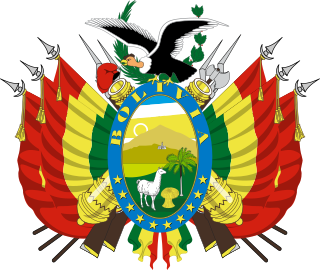 W
WThe Bolivian gas conflict was a social confrontation in Bolivia reaching its peak in 2003, centering on the exploitation of the country's vast natural gas reserves. The expression can be extended to refer to the general conflict in Bolivia over the exploitation of gas resources, thus including the 2005 protests and the election of Evo Morales as president. Before these protests, Bolivia had seen a series of similar earlier protests during the Cochabamba protests of 2000, which were against the privatization of the municipal water supply.
 W
WNicolás Suárez Callaú set up a multinational rubber empire in South America at the beginning of the 20th century.
 W
WThe Cochabamba Water War was a series of protests that took place in Cochabamba, Bolivia's fourth largest city, between December 1999 and April 2000 in response to the privatization of the city's municipal water supply company SEMAPA. The wave of demonstrations and police violence was described as a public uprising against water prices.
 W
WBolivia has had seventeen constitutions, including the present one, since its foundation in 1825.
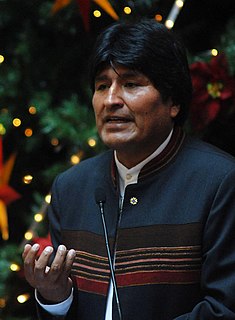 W
WThe socialist administration of former Bolivian president Evo Morales maintained a strained relationship with the Bolivian hierarchy of the Roman Catholic Church. This relationship posed a problem for Morales, as polls taken in the early 2000s indicated that about seven million of the nine million Bolivians adhered to the Roman Catholic faith.
 W
WThe Federación Sindical de Trabajadores Mineros de Bolivia, FSTMB, is a labor union in Bolivia that represents miners. Bolivia's miners are commonly regarded as the country's most class-conscious workers. The FSTMB has played an important role in Bolivia's recent history.
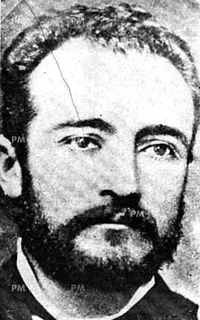 W
WThe Federal Government Junta was a civil-military triumvirate which temporarily assumed power in Bolivia after Liberal party victory in the Federal Revolution of 1899. It was composed of Colonel José Manuel Pando, Serapio Reyes Ortiz, and doctor Macario Pinilla Vargas. The Junta was proclaimed on December 12, 1898, led the Liberal effort in the Revolution, and governed Bolivia from April 12 to October 25, 1899. It carried out various institutional reforms and erected public works, such as the construction of the Palace of Government in La Paz. In 1899, a National Convention elected Pando president, replacing the Junta.
 W
WThe Bolivian Civil War, also known as the Federal War was a civil war in Bolivia fought from 1898 to 1899. The war saw two factions, a conservative side supported by the political, economic and religious elite of the country with control of the armed forces and who defended a unitary state, and a liberal faction opposed to the policies set by the state and that intended to transform the country into a federation, with support of the peasantry, the indigenous peoples and small Catholic businesses.
 W
WAlfonso Gumucio Reyes was a political leader of the Movimiento Nacionalista Revolucionario (MNR) and one of its founding members in 1940. After the triumph of the Revolution of April 9, 1952, Gumucio Reyes became the President of the Corporación Boliviana de Fomento (CBF), the State institution in charge of economic development and infrastructure. As such he was responsible for several development projects, such as the Planta Industralizadora de Leche (PIL) in Cochabamba; the Ingenio Guabirá, a sugar mill in Santa Cruz; and the main roads from the highlands to the eastern part of the country, the lower lands.
 W
WThe Kalasasaya or Stopped Stones is a major archaeological structure that is part of Tiwanaku, an ancient archeological complex in the Andes of western Bolivia that is designated as a UNESCO World Heritage Site.
 W
WThe Lupaca, Lupaka, or Lupaqa people were one of the divisions of the ancestral Aymaras. The Lupaca lived for many centuries near Lake Titicaca in Peru and their lands possibly extended into Bolivia. The Lupacas and other Aymara peoples formed powerful kingdoms after the collapse of the Tiwanaku Empire in the 11th century. In the mid 15th century they were conquered by the Inca Empire and in the 1530s came under the control of the Spanish Empire.
 W
WThe military and political career of Simón Bolívar, which included both formal service in the armies of various revolutionary regimes and actions organized by himself or in collaboration with other exiled patriot leaders during the years from 1811 to 1830, was an important element in the success of the independence wars in South America. Given the unstable political climate during these years, Bolívar and other patriot leaders, such as Santiago Mariño, Manuel Piar, José Francisco Bermúdez and Francisco de Paula Santander often had to go into exile in the Caribbean or nearby areas of Spanish America that at the moment were controlled by those favoring independence, and from there, carry on the struggle. These wars resulted in the creation of several South American states out of the former Spanish colonies, the currently existing Venezuela, Colombia, Ecuador, Peru and Bolivia, and the now defunct Gran Colombia.
 W
WPedro Domingo Murillo was a patriot of Upper Peru who played a key role in Bolivia's independence.
 W
WThe Republic of North Peru was one of the three constituent Republics of the short-lived Peru–Bolivian Confederation of 1836–1839.
 W
WAlfredo Ovando Candía was the Commander of the Bolivian Air Forces and ambassador who served as the 48th President of Bolivia twice nonconsecutively, first as co-president with René Barrientos from 1965 to 1966 and then as de facto president from 1969 to 1970.
 W
WCommandante Manuel Ascencio Padilla was an Upper Peruvian guerrilla chief who fought in the Bolivian War of Independence with his wife, Juana Azurduy de Padilla who shared his commitment towards Bolivian indigenous populations. The town of Padilla, Bolivia is named in his honor.
 W
WÁngel Víctor Paz Estenssoro was a Bolivian politician who served as the 45th President of Bolivia for three nonconsecutive and four total terms from 1952 to 1956, 1960 to 1964 and 1985 to 1989. He ran for president eight times and was victorious in 1951, 1960, 1964 and 1985. His 1951 victory was annulled by a military junta led by Hugo Ballivián, and his 1964 victory was interrupted by the 1964 Bolivian coup d'état.
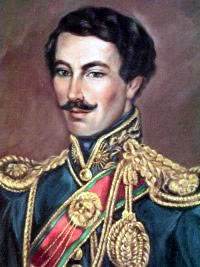 W
WJosé María Pérez de Urdininea was a Bolivian politician who served as the 3rd President of Bolivia on an interim basis in 1828. He was the first Bolivian president to be born in Bolivia itself. He fought with the patriots against the Argentines in Peru. Despite being President for only three months, Pérez held a number of important positions in the Bolivian government including Minister of War between 1841 and 1847.
 W
WThe Peru–Bolivian Confederation was a short-lived state that existed in South America between 1836 and 1839. The country was a loose confederation between the states of Peru, divided into the Republic of North Peru and the Republic of South Peru, and Bolivia, with the capital located in Tacna. The Peru–Bolivian Confederation's formation was personally influenced by Marshal Andrés de Santa Cruz, the President of Bolivia, who served as the first and only head of state under the title "Supreme Protector".
 W
WPre-Columbian Bolivia covers the historical period between 10,000 BCE, when the Upper Andes region was first populated and 1532, when Spanish conquistadors invaded Inca empire. The Andes region of Pre-Columbian South America was dominated by the Tiwanaku civilization until about 1200, when the regional kingdoms of the Aymara emerged as the most powerful of the ethnic groups living in the densely populated region surrounding Lake Titicaca. Power struggles continued until 1450, when the Incas incorporated upper Bolivia into their growing empire. Based in present-day Peru, the Incas instituted agricultural and mining practices that rivaled those put in place many years later by European conquerors. They also established a strong military force, and centralized political power. Despite their best efforts however, the Incas never completely controlled the nomadic tribes of the Bolivian lowlands, nor did they fully assimilate the Aymara kingdoms into their society. These internal divisions doomed the Inca Empire when European conquerors arrived.
 W
WJorge Fernando Quiroga Ramírez, nicknamed Tuto Quiroga is a Bolivian politician who served as the 36th Vice President of Bolivia from 1997 to 2001 under President Hugo Banzer. Following Banzer's resignation due to terminal illness, Quiroga assumed the presidency and served as the 62nd President of Bolivia from 2001 to 2002.
 W
WThe Revolutionary Nationalist Movement is a political party in Bolivia and the leading force behind the Bolivian National Revolution. It influenced much of the country's history since 1941.
 W
WManuel Rocha is an American diplomat and former United States Ambassador to Bolivia.
 W
WEduardo Rodríguez Veltzé is a Bolivian judge. During the 2005 political crisis in Bolivia, he briefly served as the 64th President of Bolivia on an interim basis following the resignation of President Carlos Mesa. Prior to his temporary role as president, he was the Chief Justice of the Supreme Court of Bolivia.
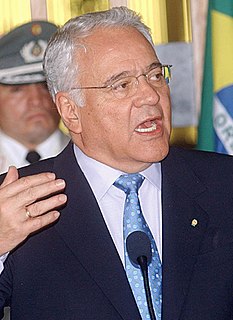 W
WGonzalo Sánchez de Lozada Sánchez Bustamante, familiarly known as "Goni", is a Bolivian politician and businessman, who served as the 61st President of Bolivia for two nonconsecutive terms from 1993 to 1997 and from 2002 to 2003. He is a lifelong member of the Revolutionary Nationalist Movement. As Minister of Planning in the government of President Víctor Paz Estenssoro, Sánchez de Lozada used "shock therapy" in 1985 to cut hyperinflation from an estimated 25,000% to a single digit within a period of less than 6 weeks.
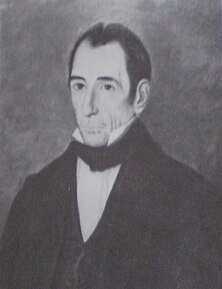 W
WJosé Mariano Serrano was a Bolivian-born statesman and jurist. He was a representative to the Congress of Tucumán of 9 July 1816 which declared the Independence of the provinces of the River Plate and presided over the assembly that declared the independence of Bolivia.
 W
WBartolina Sisa Vargas was an Aymaran woman and indigenous heroine who led numerous revolts against the Spanish rule in Charcas, then part of the Viceroyalty of Peru and present-day Bolivia. Alongside her husband, the indigenous leader Túpac Katari, she participated in the organisation of indigenous military camps that took part in the siege of La Paz. She was betrayed and turned in to the Spanish authorities, who later executed her.
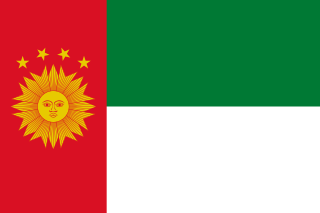 W
WThe Republic of South Peru was one of the three constituent Republics of the short-lived Peru-Bolivian Confederation of 1836–39.
 W
WThe Syndicalist Confederation of Intercultural Communities of Bolivia is a peasant union of rural communities in the lowlands of Bolivia whose members included people of highland origin. It is led by Pedro Calderón and includes federations in six departments: La Paz, Cochabamba, Santa Cruz, Tarija, Chuquisaca, and Beni. It was founded on February 18, 1971 as the Syndicalist Confederation of Colonizers of Bolivia. At the time, its independence from the government represented a defiant break from the so-called Military-Peasant Pact.
 W
WThe Tiwanaku State was a Pre-Columbian polity in western Bolivia based in the southern Lake Titicaca Basin. Tiwanaku was one of the most significant Andean civilizations. Its influence extended into present-day Peru and Chile and lasted from around 550 to 1000 AD. Its capital was the monumental city of Tiwanaku, located at the center of the state's core area in the southern Lake Titicaca Basin. This area has clear evidence for large-scale agricultural production on raised fields that probably supported the urban population of the capital. Researchers debate whether these fields were administered by a bureaucratic state (top-down) or through collaboration of a segmented state or federation with local autonomy. One obsolete theory suggests that Tiwanaku was an expansive military empire, based on comparisons to the later Inca Empire, but supporting evidence is weak.
 W
WThe Treaty of Petrópolis, signed on November 11, 1903 in the Brazilian Imperial city of Petrópolis, near Rio de Janeiro, ended tensions between Bolivia and Brazil over the then-Bolivian territory of Acre, a desirable territory during the contemporary rubber boom.
 W
WThe Treaty of Valparaiso was an agreement between Chile and Bolivia that ended the War of the Pacific. Signed on April 4, 1884, the third treaty of the war forced Bolivia to give Antofagasta to Chile.
 W
WTúpac Amaru was the last monarch of the Neo-Inca State, the remnants of the Inca Empire in Vilcabamba, Peru. He was executed by the Spanish following a months-long pursuit after the fall of the last stronghold of the Neo-Inca State.
 W
WTúpac Katari or Catari, born Julián Apasa Nina, was the indigenous Aymara leader of a major insurrection in colonial-era Upper Peru, laying siege to La Paz for six months. His wife Bartolina Sisa and his sister Gregoria Apaza participated in the rebellion by his side. The rebellion was ultimately put down by Spanish loyalists and Katari was executed by quartering.
 W
WUpper Peru is a name for the land that was governed by the Real Audiencia of Charcas. The name originated in Buenos Aires towards the end of the 18th century after the Audiencia of Charcas was transferred from the Viceroyalty of Peru to the Viceroyalty of the Río de la Plata in 1776. It comprised the governorships of Potosí, La Paz, Cochabamba, Chiquitos, Moxos and Charcas.
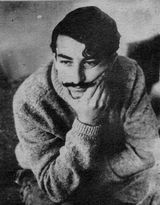 W
WJorge Vázquez Viaña was a Bolivian revolutionary. He was part of the intellectual revolutionary guerrilla group of Che Guevara.
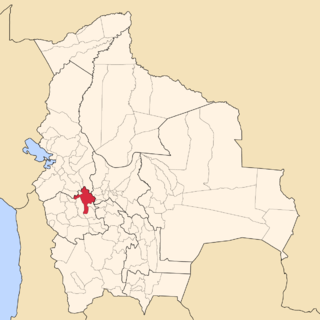 W
WThe Wankarani culture was a formative stage culture that existed from approximately 1500 BCE to 400 CE on the altiplano highlands of Bolivia's Oruro Department to the north and northeast of Lake Poopo. It is the earliest known sedentary culture in Bolivia, as after circa 1200 BCE camelid hunters of the altiplano became camelid herders and sedentary lifestyle developed. The Wankarani culture was little researched before 1970, when Carlos Ponce Sanginés defined all the mound sites in the area as belonging to one culture that predated Tiwanaku and was contemporary with the Chiripa culture.
 W
WJosé Ignacio Warnes y García de Zúñiga was an Argentine soldier who fought in the Argentine War of Independence. Son of the mayor of the city of Buenos Aires Manuel Antonio Warnes y Durango and Ana Jacoba García de Zúñiga y Lizola. His sister Manuela married José Joaquín Prieto, president of Chile.
 W
WPablo Zárate, also known as Willka, was an indigenous Bolivian caudillo. He was an officer in the Bolivian army, reaching the rank of colonel. He led one of the largest Indian rebellions in the history of Bolivia.